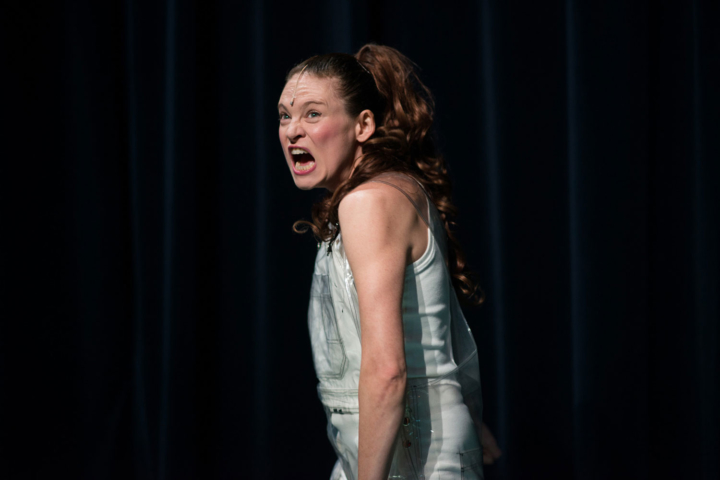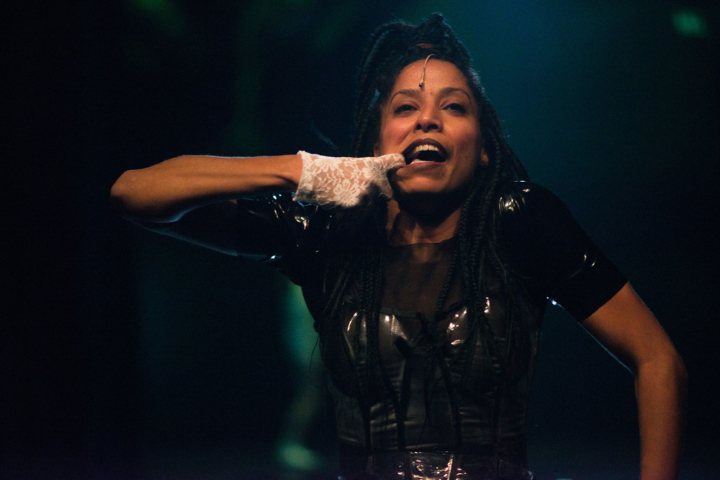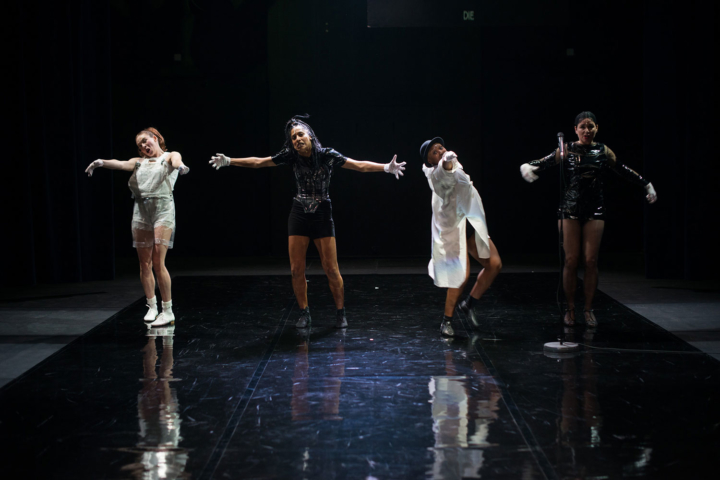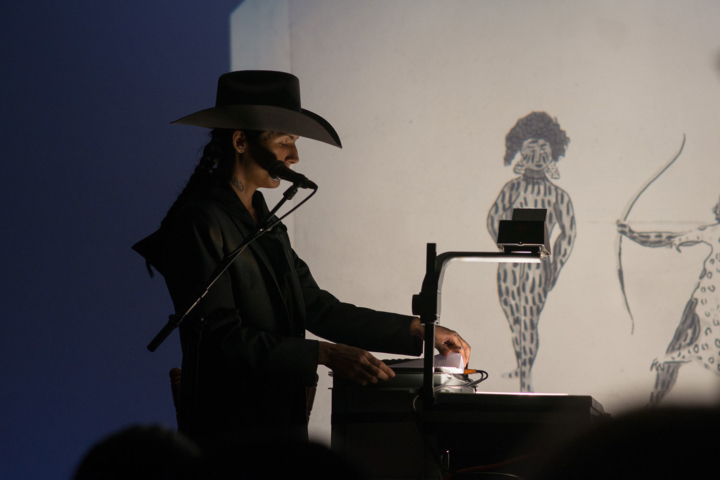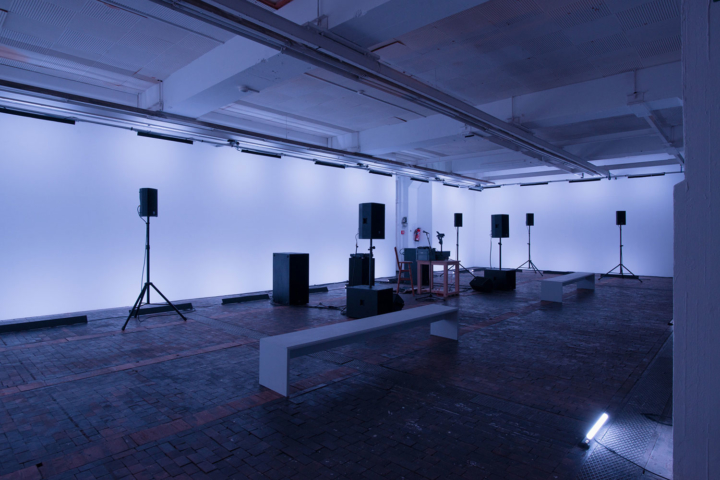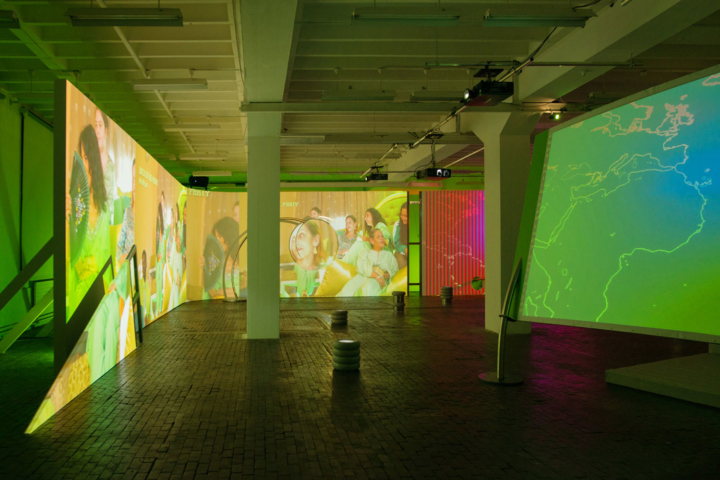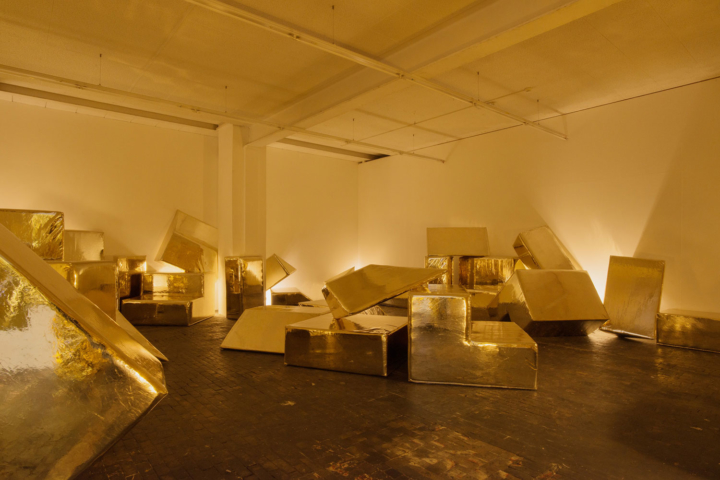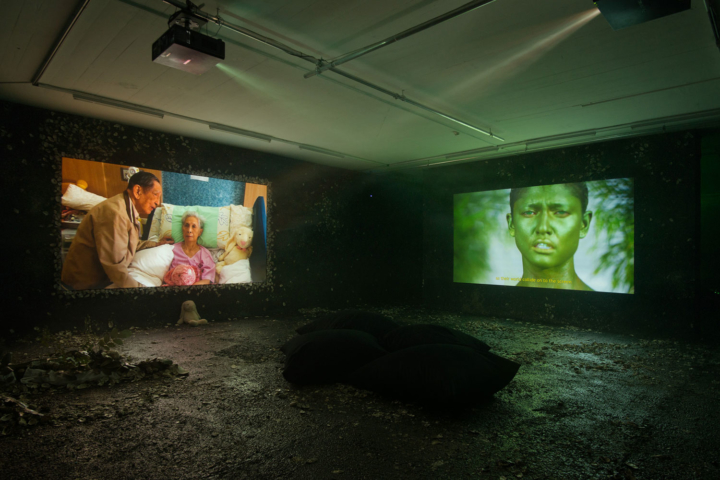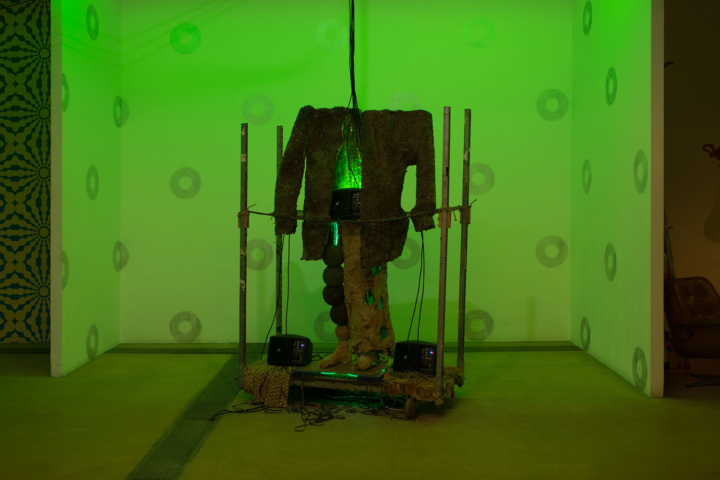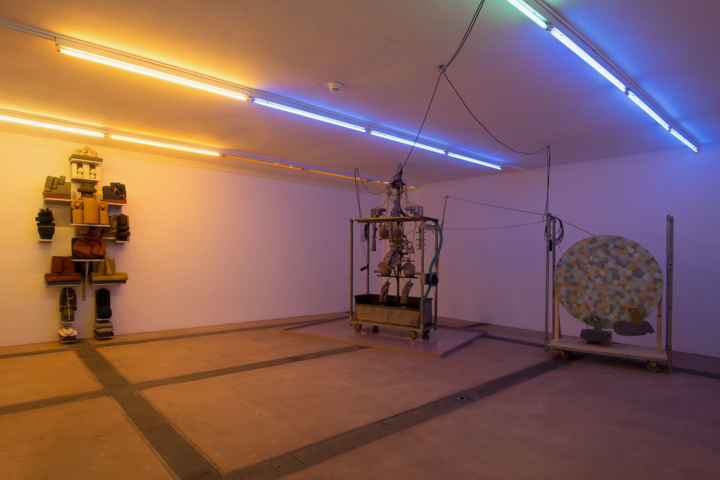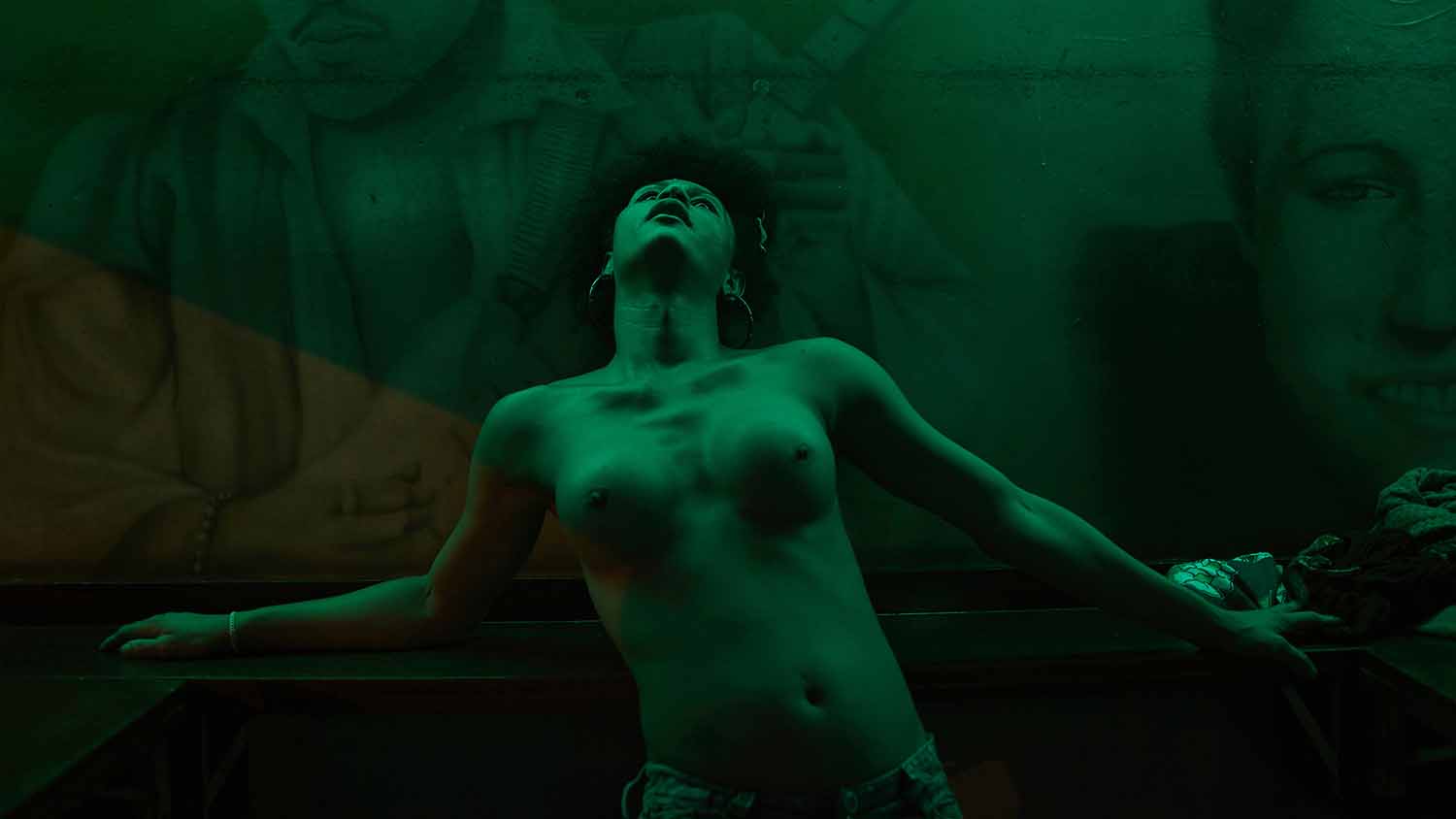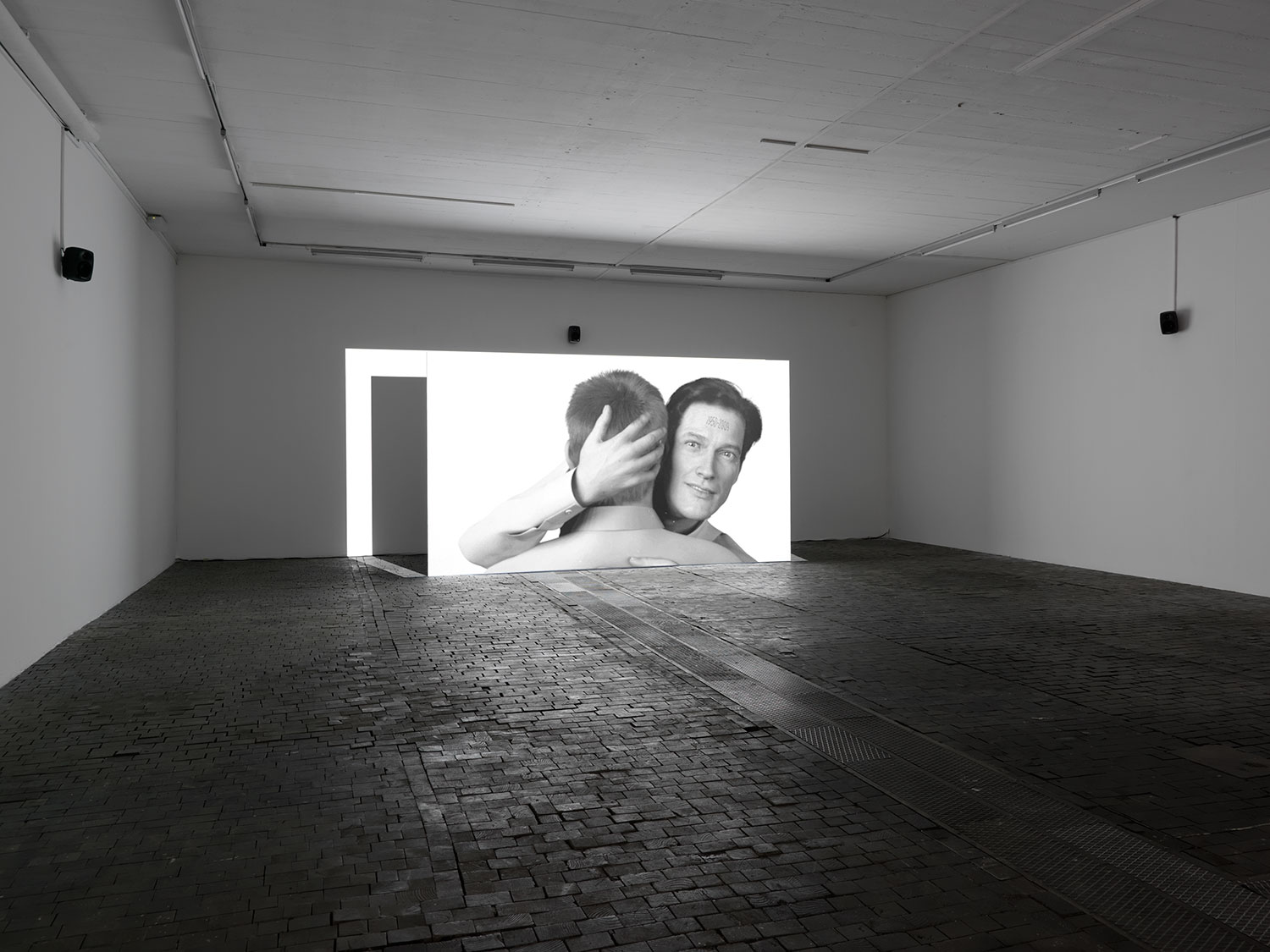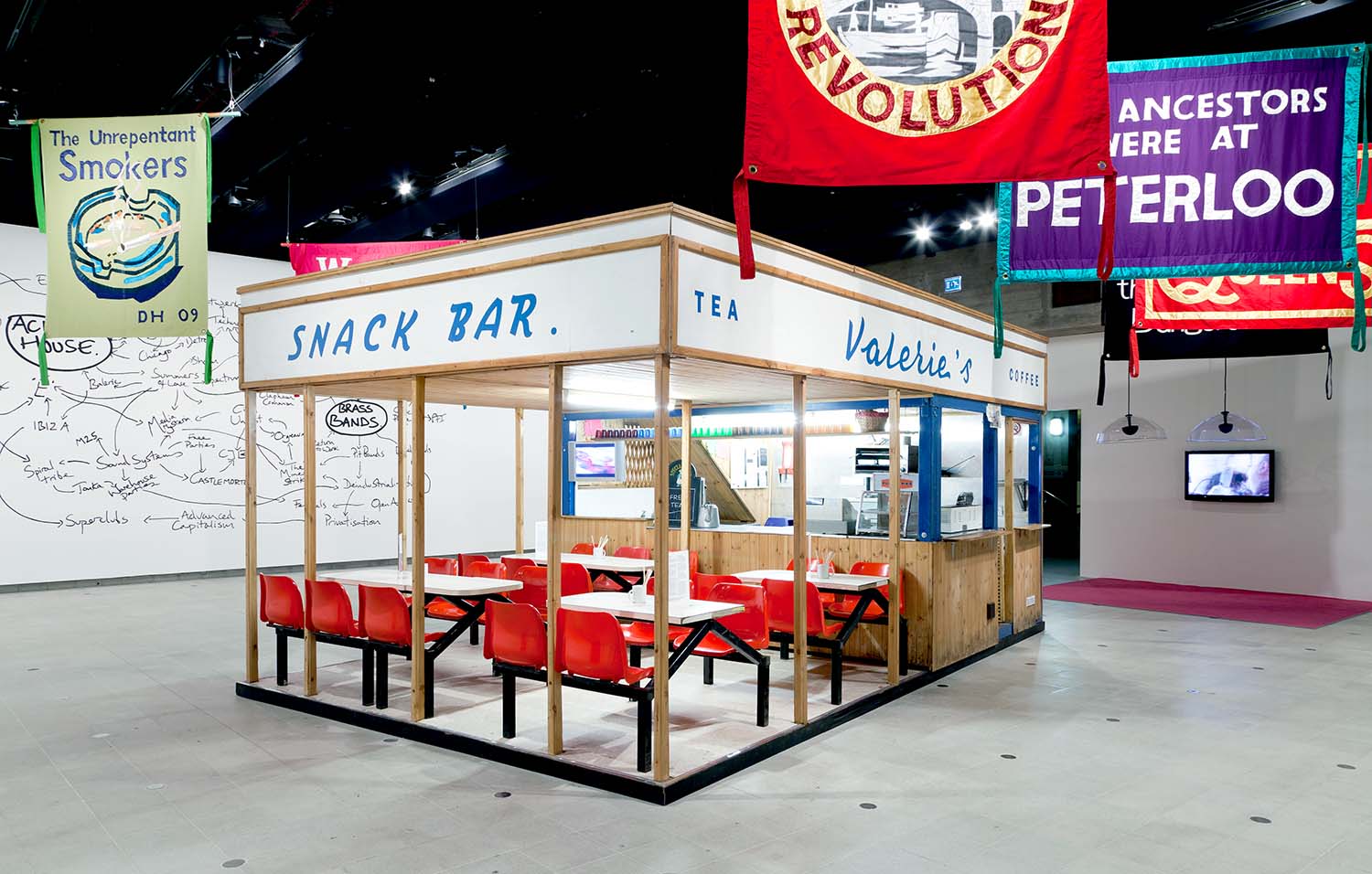A few days before the opening of the Biennale de l’Image en Mouvement in Geneva in November 2018, I came across Allan deSouza’s newly published book How Art Can Be Thought. At the exhibition, the dissonant sounds of scratchy broadcasts and old-school hip-hop tracks (“Vocab” by the Fugees comes to mind) provide the soundtrack to a succession of news composites, advertising spots for iconic products, and famous faces of black America; this is the two-channel video installation BLKNWS (all works 2018 unless otherwise noted) by Kahlil Joseph. Located next to the welcome desk of the biennale, the video provides a generative point of reference: not only for the viewer, but also for the image and its precarious viability.
“The Sound of Screens Imploding,” the title of the biennial, reflects upon the transience of the image in movement and as well as the transience of its medium, the screen. The latter is called into question here: When the image implodes on the screen/space of production/existence, where does it go exactly? It expands, contradictorily, beyond the space of the screen into the space of the exhibition, “lingering on in a fascinating kaleidoscope where vision can be shaped by sound as much as by the image itself, or even more so” (according to the statement written by the curators).
The image is, in fact, constructed on a screen that has never belonged to it; any fixed attachment to the screen itself would negate its reproducibility, its nomadic essence. The nomenclature of art today is similarly no longer sufficient to categorize or contain meanings. In this respect, deSouza’s text is particularly illuminating in its reconsideration of an entire glossary — modeled after Raymond Williams’s Keywords: A Vocabulary of Culture and Society (1976) — an approach that reformulates the intrinsic definitions of art, activating a sort of pedagogical decolonization of art histories. Browsing through the glossary, I pause at “Medium (#Message)” and “Moved (#Emotion; #Gut Feeling). In the first instance, deSouza is elaborating on Marshall McLuhan’s slogan “the medium is the message,” arguing that “meaning is embedded within and conveyed through the materiality and technology of a medium. Art itself … extend[s] from an individual work’s materiality to become the broader medium through which the work functions.” In the second instance, deSouza affirms that “emotion can be thought of in terms of bodily mobility,” and posits that those who look at art are “moved out of their present intellectual and/or emotional stability in which they might feel safety located, to a state that is more unstable and even threatening. In this case, being moved is to be cast into a state of precariousness, which, like the sublime, is inherently destabilizing and potentially threatening.” The glossary deliberately leaves out terms like “image” or “movement,” though they are implicated and incorporated in other ways. “Medium” and “Moved” are complementary to a certain way of understanding and empathizing with images, and function as attempts to shift attention onto the viewer anew, as the biennial also does.
Conceived as a wide-open space for the overproduction of moving images — composed of immersive micro-environments, as if they were vessels communicating with one another — the biennial also produces a soundscape that becomes an image of the image itself in almost every corner.
Andreas Angelidakis’s Demos Bar, an array of modular parallelepipeds in gold faux leather echoing minimalist kitsch, guides us toward the soundtrack Orcorara (tres estrellas todas yguales) by Elysia Crampton. In the piece, music and stories taken from the texts of eighteenth-century writer Joan de Santa Cruz Pachacuti Yamqui Salcamaygua are played over speakers, layered with neon lights that alternate between colors and a play of shadows, projected in a loop of approximately seventy minutes. The abuse of digital post-production and amateur videos is interrupted by a staged celebration with Moroccan customs and traditions in Party on the CAPS by Meriem Bennani. Bennani takes an ironic, lucid approach to immigration in the United States: she imagines an island, CAPS, as an incubator of undocumented migrants intercepted by the US. Also touching upon the impermeability of walls is the exemplary Walled Unwalled by Lawrence Abu Hamdan. Compelling in its visual representation of sound, it speaks to the experience of an increasingly claustrophobic and monitored existence. The film Parsi by Eduardo Williams repeats Mariano Blatt’s poem “No es” while capturing the everyday life of a group of queer black boys with a camera in constant motion. “What seems to be but isn’t,” recites Blatt — a conundrum that also hovers in the video No history in a room filled with people with funny names 5 by Korakrit Arunanondchai and Alex Gvojic (with Boychild). In the installation, the room is refracted by a green laser harp and is permeated by a nauseating odor produced by a layered mound of clay, latex paint, and seashells; meanwhile, the screens transmit the irrepresentability of the boundaries of human existence.
Feelings of melancholy and primordial instinct pervade Tissues I, a choral performance by Pan Daijing at the Sicli Pavillon. A stage is constructed but its borders are not marked, and so the performance spills over, inviting us to follow it, where it finishes in nothingness — or perhaps it has yet to continue. In contrast is Water Will (in Melody)/Preview by Ligia Lewis, a schizophrenic melodrama in a black-box theater, in which paranoia, instability, and the current obsession with streetwear reverberate (one of the performers, Dani Brown, seems attired to walk down an Eckhaus Latta runway). Reflecting upon the “body-machine,” Womb Life is a navigation of dreams and premonitions by Tamara Henderson, who has recently been preparing for the birth of both the installation and her son. The mechanical sculptures that compose Womb Life recall Jean Tinguely’s Méta-mécaniques (1953–55) and, reclaiming the surrealist object, recall the Lacanian vision of the body as “a sentence which invites interruption.” James K. Kienitz Wilkins begins his stream-of-consciousness narration to the film This Action Lies with the words “I’m making an apology.” As the film’s only image is a polystyrene coffee cup, the voice becomes the image.
The biennial’s voices overlap with its sounds. In No history in a room filled with people with funny names 5, Boychild whispers: “Such a place the space without a screen.”

